How to do linear displacement?
-
I realize the subject line isn't very clear, hopefully i'll explain myself with some images. I've been playing with displacement maps recently (http://forums.sketchucation.com/viewtopic.php?f=18&t=21987), but ran into a problem...
let's see if i can explain myself correctly... a straight black-to-white gradient doesn't displace geometry as a straight line, but as some kind of a curve (see diagram for approximation).
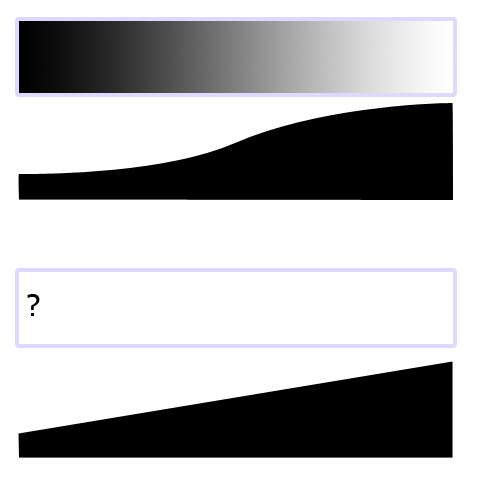
a displacement map created, for example, from my fog method (see linky above), will never be accurate since it isn't displacing the geometry "evenly," if you know what i mean.
The solution would be to create a method by which a displacement map could be modified in an image editor to trick Vray. Or in other words, what should be done to the straight gradient so that it produces a straight displacement?
I've been trying some but it only makes it worse.
Any help/tips would be amazing, not only to let me sleep at night, but I would give it so much use!
Also, here's a quick image on something i did using the fog method that's not topography
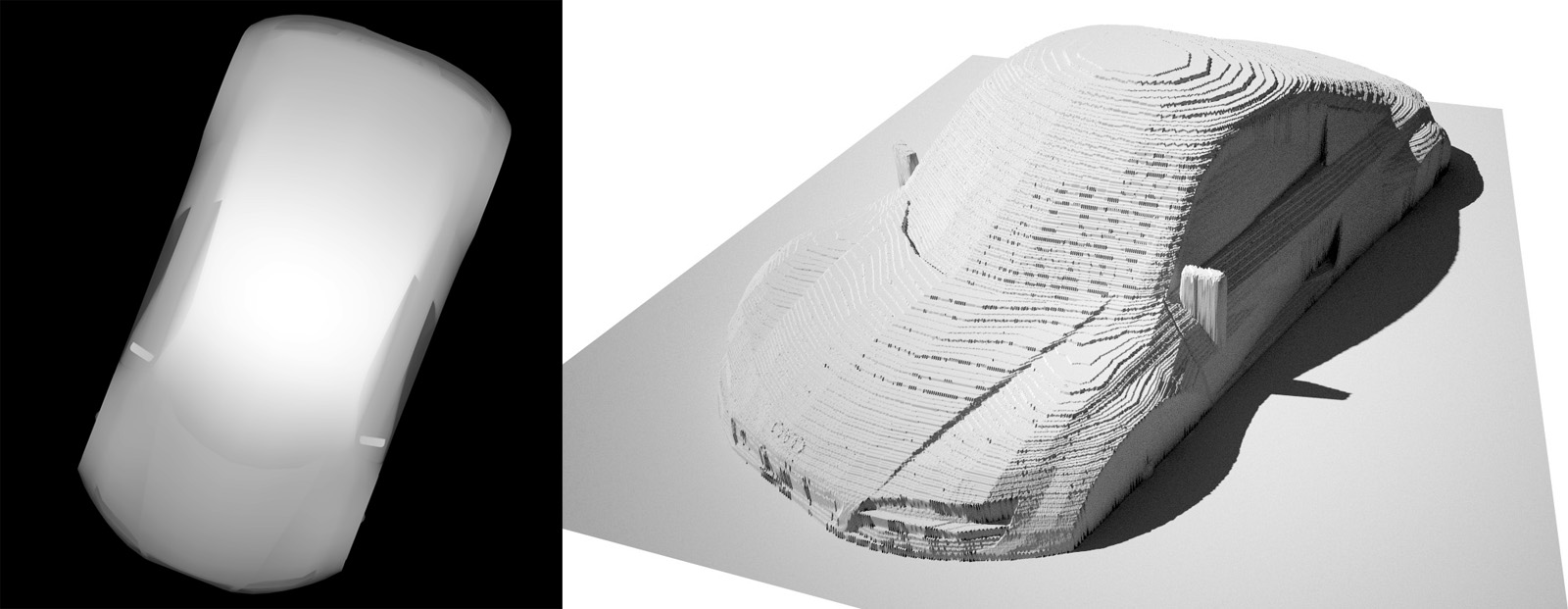
cheers!
-
looks like a sampling resolution issue? i'm not that familiar with vray but is there a way to set a higher sample rate for displacement (like you can with shadow mapping)?
-
thanks xrok! i tried looking around for that, and i'm sure it's there, but couldn't find it.
I gave it some more time today and answered my own question. Basically, if you have a hypsometric drawing (black-to-white according to depth), you would need to modify the Curve in Photoshop so Vray displaces it accurately.
This curve to be exact:
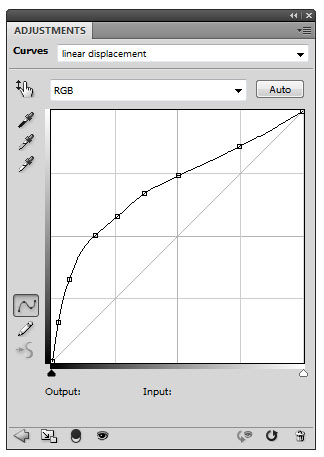
Maybe i've lost everyone and am just rambling on with myself, I would be happy to do a tutorial about it if anyone's interested.
Basically, it's a method to create displacement maps from Sketchup geometry. -
V-Ray for Sketchup applies a 2.2 gamma correction to 8bit texture maps - even displacement maps.
Either use a 32bit displacement image, or override the displacement map gamma with a negative gamma 0.4545. (I think it would be the inverse of the Global gamma correction from under General Switches.)See more info in this thread:
http://forums.sketchucation.com/viewtopic.php?f=322&t=18202&p=189538#p148769 -
@thomthom said:
V-Ray for Sketchup applies a 2.2 gamma correction to 8bit texture maps - even displacement maps.
Either use a 32bit displacement image, or override the displacement map gamma with a negative gamma 0.4545. (I think it would be the inverse of the Global gamma correction from under General Switches.)See more info in this thread:
http://forums.sketchucation.com/viewtopic.php?f=322&t=18202&p=189538#p148769right right! that makes sense, seems like I went for the less technical option, your method solves it perfectly.
thanks very much thomthom! -
So what's you're doing with that displacement there?
-
@thomthom said:
So what's you're doing with that displacement there?
oops sorry, I haven't checked the forums in a couple of days...
I've been working at uni on some very large topography, and even though I had the 3D model made with the sandbox tools, it was just too big to be usable.So I thought displacement might be a good option, and it definitely helped! I needed different layers of information projected onto the 3D model and just had to change the diffuse layer in the vray material.
Like so:
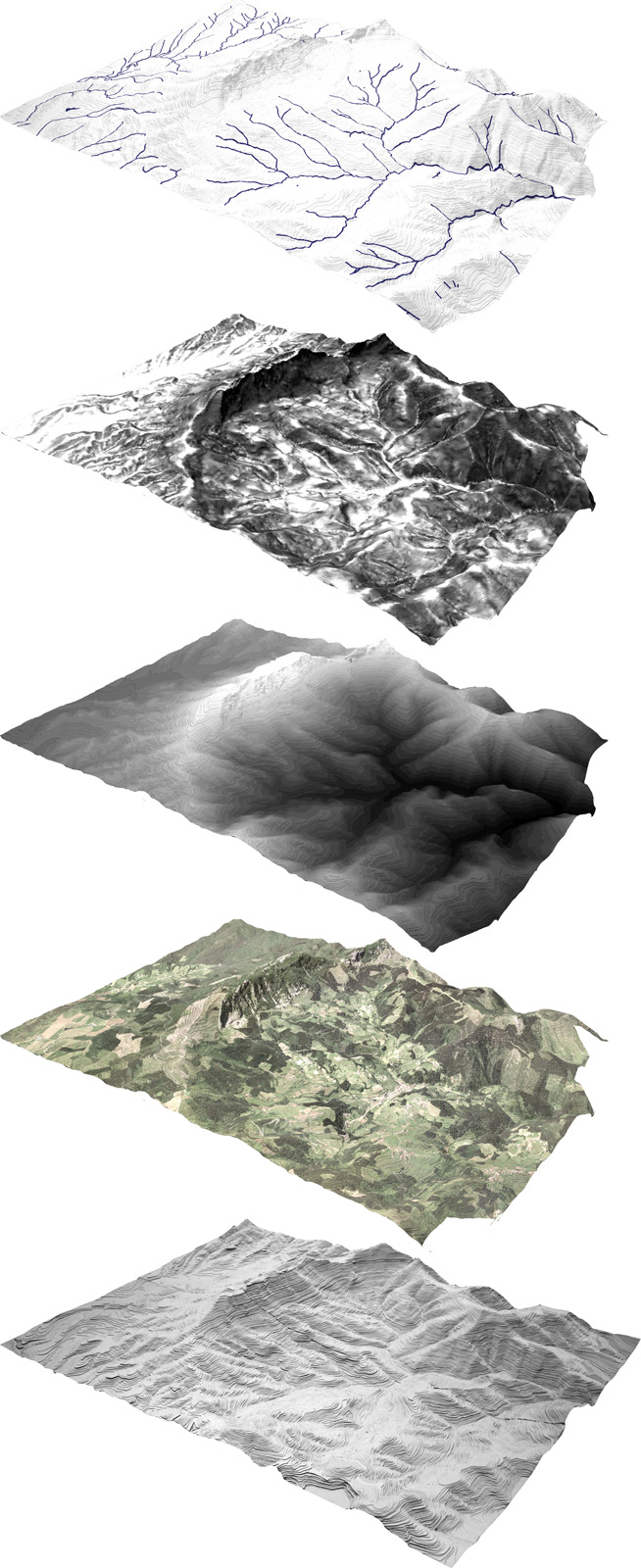
-
How did it go - displacing such a large area in V-Ray?
-
better than expected actually, it never took longer than 15 minutes to render at a pretty decent quality, so it never obstructed the workflow
-
Will/can you post back the final results? It'd be interesting to see.
-
well, everything was similar to what i posted just now, just different layers of information projected onto the terrain (villages, rivers, climate, woodland, etc.), nothing amazing really.
The pure displacement map generated this:
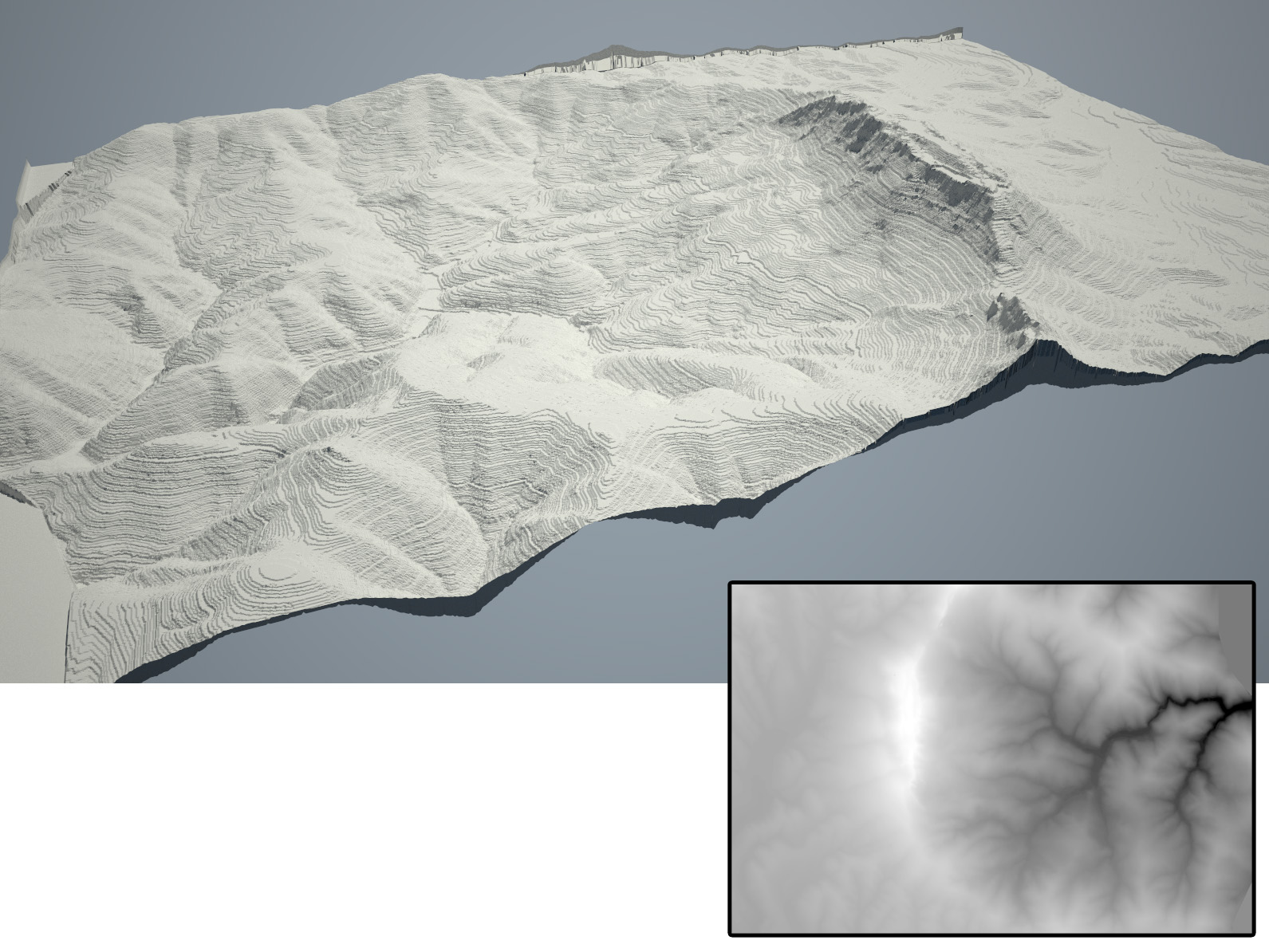
(7 minute render)
Advertisement







